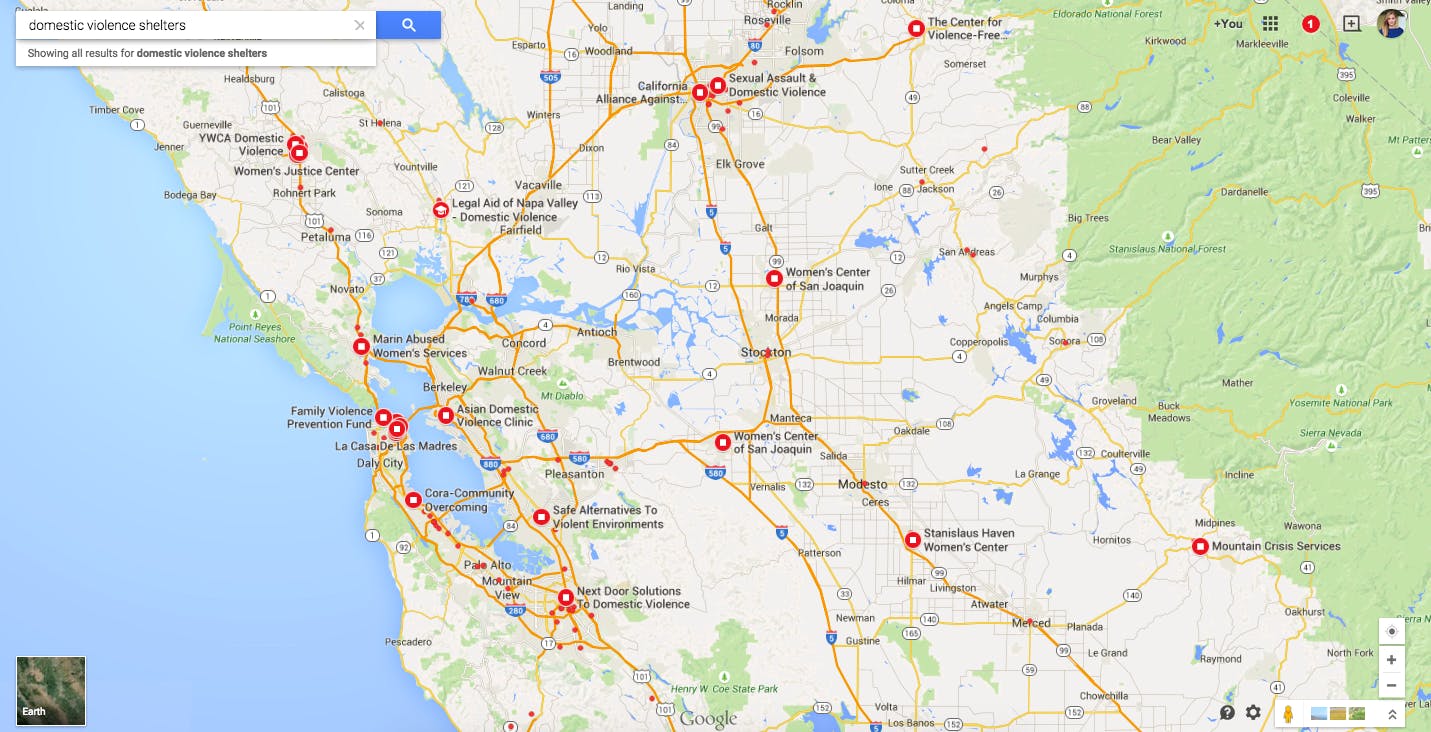If you search Google Maps for “domestic violence shelters,” red dots will pop up all over your city. Some of them represent non-profits or other organizations working to support victims of domestic violence. But others represent crisis shelters—places where people who have experienced domestic violence go when they are in danger and need to be protected from their abuser.
Crisis shelters provide a safe haven for victims and their families; they are a refuge away from abusers. By publicly listing shelter locations online, Google is endangering victims of domestic abuse, says Jeremy Janice, a facilities coordinator at a Louisiana crisis center.
Almost 5 million women experience physical abuse by their partner every year. Every minute, 20 people in the U.S. are physically abused by an intimate partner, according to the National Coalition Against Domestic Violence. Over 80 percent of women who have experienced domestic violence report being stalked by their abuser.
Janice is hoping to convince Google to take down the exact addresses of shelters and instead simply list phone numbers for the organizations. His Change.org petition asking Google to remove the information has received almost 14,000 signatures.
Google did not immediately respond to a request for comment.
“Crisis shelters are supposed to be places where survivors of domestic violence can feel safe, get some perspective and be empowered to make positive moves in their life,” Janice told the Daily Dot. “If their abusers know where they are they can intimidate, stalk, coerce or even attack the survivors. The days after leaving their abusers are often the most dangerous time for them.”
Janice, who has worked at the crisis center for almost two years, said his organization has faced situations where an abuser tracked down a victim thanks to Google. Shelters are in regular contact with one another, and Janice says other facilities have experienced similar threats.
“Fortunately, the security measures that shelters have in place have been sufficient in keeping survivors safe even in the instances of abusers locating the shelter thus far,” he said.
A number of Janice’s colleagues have tried to get Google to remove their crisis center’s location from Maps, but Google hasn’t done it. When Janice searched the Web for domestic-violence shelters around the country, he found the same problem—countless listings of shelters with physical locations in Google Maps.
In San Francisco, Google faces pressure from Sarah Blaszczak, a clinical manager at San Francisco SafeHouse, a crisis center and sober-living community for homeless and prostituted women. She has corresponded with Google for a month, doing what she describes as “a bit of a dance,” in an attempt to get her organization removed from Maps.
“We have people here that not only have had violent interactions with average Joes—former husbands and things—but there are people that are in danger from public officials and police officers,” Blaszczak said. “We have some people that it would be easier for them to be found anyway because of the people that they are being hunted by. So this just makes it even easier for those folks.”
Google responded quickly to Blaszczak’s initial outreach and is working with her to help remove the information. But she faces a lengthy process, including Google sending her a passcode through the mail to let her access an account to change her organization’s information. At press time, the location was still publicly available.
Blaszczak seemed pessimistic that the process would eventually be successful, but she’s taking Google at its word that the passcode that’s working its way to her will let her change the address.
Blaszczak hasn’t asked Google to hide the locations of all crisis shelters in the U.S. and replace them with phone numbers (or in the case of shelters like San Francisco SafeHouse, a P.O. box address). But she says that’s exactly what Google should do.
“It seems like an easy fix to me, and well-worth the effort,” she said. “I do feel like they should be doing this with any safe haven.”
Photo via katietegtmeyer/Flickr (CC BY 2.0)



